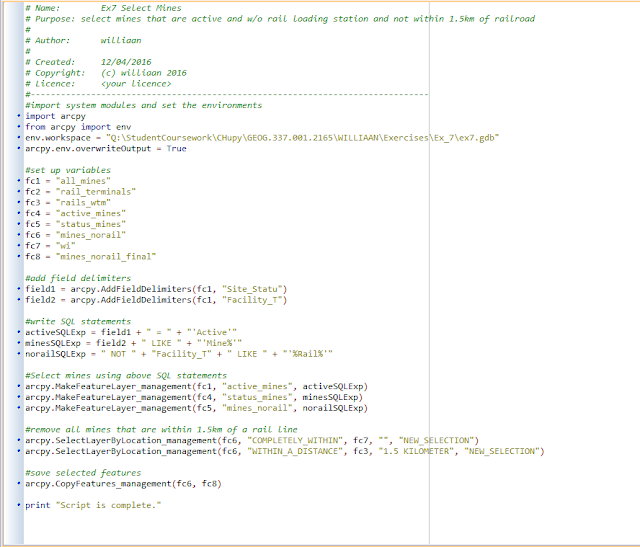Goals & Objectives
This lab concerned locating, downloading and organizing spatial data. The study area was Trempealeau County, WI, which pertains to our semester-long GIS II project regarding frack sand mining.
Specific goals addressed in this lab include increasing proficiency in:
Specific goals addressed in this lab include increasing proficiency in:
- downloading data from the internet
- data organization
- importing data to ArcGIS
- joining data
- projecting data from different sources into one coordinate system
- building and designing a geodatabase
- basic Python scripting
- determining data accuracy
Methods
The first section of this lab dealt with data management. First, I downloaded data about Trempealeau County from six different online sources using the workflow depicted in Figure 1.
 |
| Figure 1: work flow of data management |
- US Department of Transportation
- USGS National Map Viewer
- Multi-Resolution Land Characteristic Consortium
- USDA Geospatial Data Gateway
- Trempealeau County Land Records
- USDA NRCS Web Soil Survey
After the data was appropriately downloaded, unzipped, and organized in my personal class folder, I wrote a Python script that clipped and projected the data (displayed in my Python Scripts blog post on this blog). Then, I utilized ArcGIS to create a cartographically pleasing map displaying the topography of Trempealeau County (Figure 2).
Next, I examined each dataset's metadata to collect information about scale, effective resolution, minimum mapping unit, planimetric coordinate accuracy, lineage, temporal accuracy, and attribute accuracy. I recorded all of this information in a table (Figure 3).
Next, I examined each dataset's metadata to collect information about scale, effective resolution, minimum mapping unit, planimetric coordinate accuracy, lineage, temporal accuracy, and attribute accuracy. I recorded all of this information in a table (Figure 3).
 |
| Figure 2: maps of data gathered from USDA Geospatial Gateway, USGS National Map Viewer, Trempealeau County Land Records Division, USDA NRCS Web Soil Survey |
Data Accuracy
 |
| Figure 3: table depicting data accuracy information about downloaded datasets |
Conclusions
After searching the metadata for all of the sources, I found out that much of it was incomplete. Some sources were better at providing metadata and data accuracy information than others. When downloading datasets from the internet, it is important to make note of metadata and data accuracy information so you can better analyze your data.
When using these datasets later this semester for our frack sand mining project, we should keep in mind that our data accuracy information was lacking. In fact, none of our datasets included information about planimetric coordinate accuracy and only two mentioned the attribute accuracy.
When using these datasets later this semester for our frack sand mining project, we should keep in mind that our data accuracy information was lacking. In fact, none of our datasets included information about planimetric coordinate accuracy and only two mentioned the attribute accuracy.


